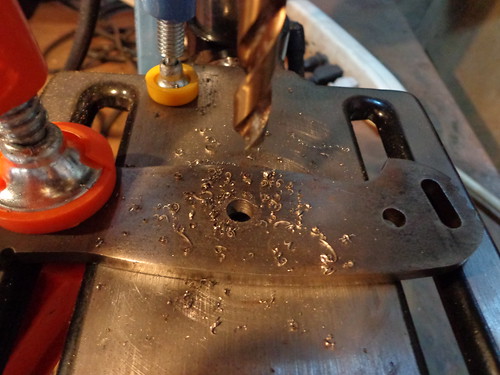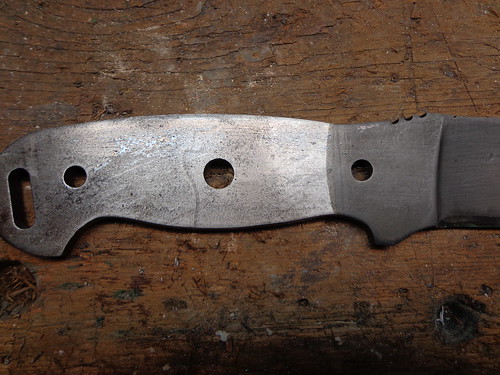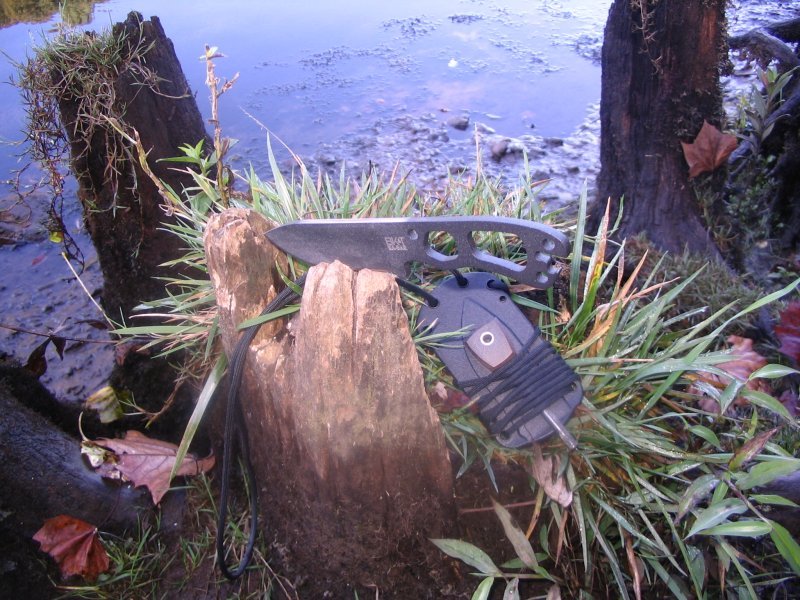- Joined
- Apr 20, 2013
- Messages
- 7,205
I've got a carbide end mill, but I'm afraid I'll ruin it. I'd rather wait until tomorrow if something else might work.
The BladeForums.com 2024 Traditional Knife is available! Price is $250 ea (shipped within CONUS).
Order here: https://www.bladeforums.com/help/2024-traditional/
Thanks!
So what type of drill (or end mill) might one use on 1095CV to open up the bolt holes? I'm trying to get them to ¼" but feel like it might take until tomorrow if I apply gentle pressure for the rest of the night.



I'd learn to get happy with the size they are!
Drilling hardened steel... nah.
YAAAAYYY, WW! ......but perhaps the handle on that (OKC?) is not so hard as the BK-7 handle....I drilled out my 11 handle....but all I have in ¼" bits is HSS, which is not cutting it ()....I'm pretty sure I used a TiNi bit for that with some cutting oil. I ain't risking the carbide end mill....too brittle. Scales will wait until tomorrow, then. Ah, well. Gotta pack up some ePrey sales (YAY! Knifemaking materials!!!) and hit the rack. Thanks for the input, both of you.
I think 5160 is shallow-hardening. I bet the handle isn't nearly as hard as the blade.
Hardened steel is hard (haha) on bits and dangers when things catch. Ruin your bits too.
I suppose the Becker handles are a bit softer too... so much work.
OK, that's what I was wundrin'! Danish oil is a finish....sounds like a good plan.

OK, first topic: How would you suggest finishing homemade canvas "my"carta? I've successfully made some (I think) but I'm concerned that the cotton will bleed color onto my hands, as it's showing a little proclivity to do so already.
I also don't want the purple dye to bleed into the orange cloth. Like I said, it's cotton duck canvas made with 3M fiberglass resin. Anyone got some ideas?
That was 1/4" thick hardened 5160 and i had no problems. It only took a few minutes and the handle never even got warm to the touch...
I think 5160 is shallow-hardening.
I read 5160 is deep hardening and 10XX steels are shallow hardening on sword forum a while back...
It didnt make a lot of noise, stink up the shop, or even feel hot to the touch though...
Well, keep trying.

Do you know if PHT heat treats this same way? where the handle is softer than the blade?
No they don't, they HT/quench/temper all my blades the same way all the way through. Call Brad and ask, if you want it done some other way. He will probably talk you out of it, and explain why a lot better than I can
